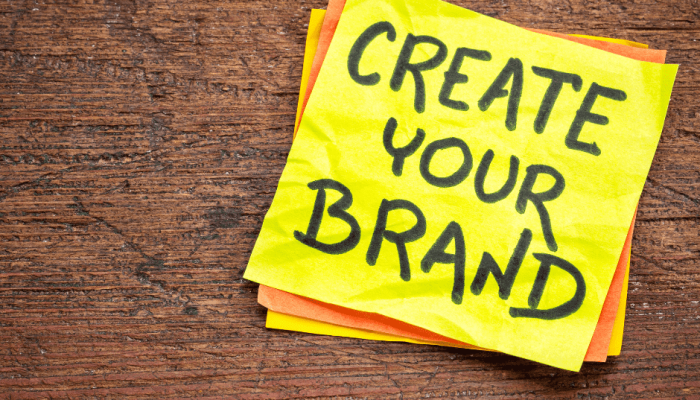Creating your brand is one of the most exciting things you can do for your business. It’s really important if you get it right, as this can be the start of your empire. If you get it wrong it can end up being a costly rebrand later on down the line. We love to give the best advice on how to grow your ecommerce brand quickly and profitably.
One of the biggest issues we see as an agency when people are trying to get a new brand up-and-running is miscommunication between the client and the designer. It’s really important to consider this right from the get go, when it comes to designing your brand this could be the make or break as to whether or not things work out as part of the process. Often we see that the client has an idea in their head, a really clear vision of what they want for their brand, but they find it hard to communicate this effectively to the designer. The designer then creates something that they think is right, but is disappointing to the client and this can lead to all sorts of ructions.
We have some really good tips on how to be able to portray what it is that you want from your brand, but also how to give your designer enough licence so that they can use the creative talents that they have to hopefully improve upon that and make something that will really work for you in the longer term. When approaching your new brand one of the most beneficial skills you can bring to the table as the client is a really clear brief.

Here’s our 5 easy steps you need to consider when creating your brand.
Step 1 – Choosing your designer is one of the first places to start, it’s important that you are sure this is someone you can work with. This is a personal experience for a business owner, this is the fundamentals, this is the birth of your baby. It’s really important that you are working with someone that you can really relate to, that you can be honest with and communicate well with.
Take time to cultivate the relationship before you actually go and commit to the final branding. A lot of designers will do a branding workshop or a strategy session which is a way of dipping your toes in the water for a lesser cost. Maybe you pay for a branding session for the day, it’s a minimal cost compared to actually creating the full brand itself. It gives you an opportunity to work with that person and really get a bit of a feel for that person or that agency to see how they would work with you and whether or not that’s going to be a good relationship. So it’s a good idea to do a test run before you go and commit to the full branding exercise.
Step 2 – Once you’ve found someone you can really work with, make sure you’ve looked through their portfolio and the designs they’ve produced so you know they will fit with your theme.
You need to be really clear on your theme, but leave the designing to the designer, that’s why you’re employing them. Your designer should be able to bring that extra bit of magic to the process to what you want. It’s important you give them enough scope and leverage to be able to bring their ideas and creativity to the table, still inline with what you have in your head.
Creating a mood board or a vision board can be really effective, there’s a range of tools you can use now, Pinterest is one of the best ones for just pinning stuff that you like and being able to build a theme. The more stuff you can put in this the better, a good designer will notice clear themes, they’ll notice overlapping elements in what you want to incorporate. This will help them work on a design that is meeting your needs, colour schemes, textures, patterns, other brands you like and incorporating what things you are attracted to. Look at logos, styling, photography, picking out specifics are really useful to include. You can always create several boards to use.

Step 3 – Your design is not just about aesthetics, it’s about how your brand comes across as a personality. The more you can harness that the better for your designer to create your design. It will allow you to create a brand that’s consistent in design and tone of voice. Think about whether your brand is fun or serious, modern and upbeat or more traditional. How would I look at this brand as an individual? What character traits would they have? How would they express themselves and what words would they use? Sharing these sorts of things with your designer will enable them to create a design that fits the social content you’re going to put out there, with blogs and copywriting on your website. This all creates a strong brand both visually and in terms of the actual content you’re producing.
Step 4 – Remember your brand is more than just a logo, sometimes people get fixated on the logo, when you look at a lot of big brands some have the most simple logo. What really makes up the aesthetics of a brand are what accompanies that logo, what patterns they use, what fonts and colours do they use? How are things displayed on screen and on printed publications and on the website?
Try and think beyond the logo when it comes to your brand and try to get your designer to create more than just a logo. When they’re presenting back to you it’s important to look at the other visuals, whether that be photography or colours etc.
Step 5 – Take the time to sleep on a design when your designer sends over three or four options for your branding – the best thing you can do is look at it, take it in and then walk away from it. Maybe put it out on display, put them up on your wall and walk past them a few times in the day. Share with friends and family and discuss, take the time to mull over it, don’t rush the process.
It’s common to be disappointed when you first see them, the designer is never going to recreate exactly what’s in your head. You need to make sure you see the designs for what they really are and give yourself time to decide about them, you’ll probably find you realise that you’ve warmed to them. We’ve seen the interaction between designer and client so many times over the years with creating new brands. We know the sort of issues that can arise and often it’s no-one’s fault, it’s just being prepared for the process.
We hope that this guide helps to take you through this process more smoothly and gives you a better idea and understanding of how best to manage creating your brand..
When you’ve got your brand nailed you’ll want to set up your online store, check out our video on comparing Woocommerce and Shopify here.



